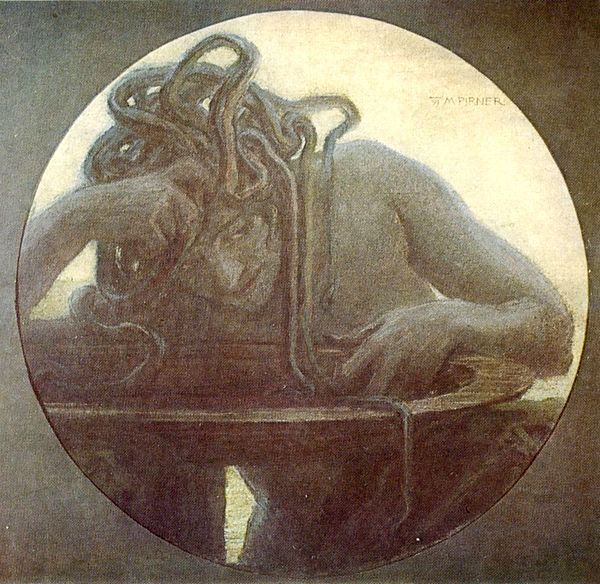Gorgon from Greek Mythology
Gorgon is a female creature from Greek mythologies. Her name came from the ancient Greek word gorgós, which means "dreadful". It also appears that the word Gorgon came from the same root as the word "garğ" from the Sanskrit language which is a sound of a beast growling probably originating as an onomatopoeia. There are also a couple of derives from the word like the Gorgoina which means someone who was petrified by Gorgon, or Gorgonize for the act of petrifying someone. There are many different descriptions of Gorgons in Greek myths, stories, and literature, but it usually describes to any of three sisters who have living snakes instead of their hair. They can also turn anyone who looks in their eyes into stone. Two of the three sisters are immortal: Stheno and Euryale while the third sister Medusa was not. She was killed by the demigod and her Perseus.
Ever since the first written records in Greek mythology and religious beliefs Gorgons have a place in it. Some of those writings are the ones of Homer which dated as early as 1194 – 1184 BC. Gorgons statues are usually put at the entrance as protection because of their power to turn people into the stone. At the one of the oldest pediment above the entrance of the temple in Corfu, there is an image of a Gorgon. That pediment dated to c. 600 BC.
Stories of Gorgons are old as stories about Perseus and Zeus. Gorgoneion is the amulet with the Gorgon head on it and its first appearance was at the turn of the eight century BC. There is some evidence by Marija Gimbutas that there are ceramic masks from Sesklo culture with Gorgon face that dated back to 6000BC. She also said that there are a lot of examples of Gorgoneion in Neolithic art like vases and masks. The kind of eyes like the one that Gorgon have or the one that Athena have (flashing eyes) are so called “the divine eyes”. Those eyes also have Athena’s sacred bird, the owl. They are usually represented by concentric circles, fire wheels, spirals, swastikas, wheels and other images.
In the Greek island, Mochlos near Crete was found a Minoan golden ring with a picture of a female figure which is probably a sea goddess with a monstrous head, sitting on a boat. In other stories, Gorgon are pictured with fangs or with a forced smile with big teeth. In the temple of Artemis in Corfu, Gorgons are shown with reptilian attributes such a belt made of snakes or snakes coming out of a head.
There are some similarities between Gorgon and the creature Humbaba from Gilgamesh epic.
Myths and stories about Medusa and Gorgons are being called quasi-historical by some early classic scholars.
According to some of the late classical poets in Greek history, Medusa, one of the Gorgons was once a beautiful woman, but Athena turned her into a monster as punish for lying with the Poseidon.
